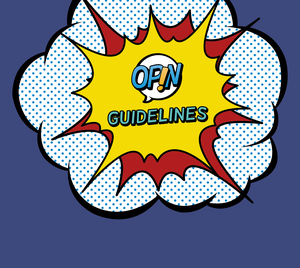Idea phase
You may have a vague idea of an eParticipation project you would like to run, e.g. there is a question that urgently needs to be discussed with the youth. Or you feel like inclusion of the youth has come up too short so far and you would like to change this and ask yourself how you can make it happen: this is what we call the „idea phase“. This early phase of a participatory project – no matter whether it is a digital or an analogue project – is often mistakenly underestimated and under-prioritised. If you have a clear picture of the purpose of the project, and the impact you want to achieve, the likelihood of successfully reaching the goals of the project is increased.
Set realistic goals for your project
You should ask yourself the following question: What do you want the project to achieve? In sum, this has to do with impact. The more clearly and realistically you can define these goals, the easier it will be for you to successfully outline the needed steps of the project to reach the desired result. As you are dealing with eParticipation and OPIN in particular – make sure, that your goals can be achieved with the functionalities of OPIN.
You can always create a test-account and play a bit with the possibilities that are offered by OPIN. Also, we urgently advise you to browse through the manual and the guidelines.
Sketch the process of your participation project from A to Z
The „e“ in eParticipation refers mainly to the participatory method you carry out. For successfully running the project actually pure project management skills are needed – same as when running analogue participatory projects: You should have a clear idea about the purpose of your project, the impact you want to achieve with it and the budget available. This means that you are now ready to make a rough sketch of the process from A to Z that should of course fit into the decision-making process.
Making a short project description of 2-3 pages is a good starting point. In this description, you could include:
- The background of the project
- The project idea and its objectives
- The method (OPIN – or even more detailed: which functionalities of OPIN and maybe how you plan to combine them with other additional methods like face-to-face events)
- The budget
- The timeline
12 Helpful tips you should keep in mind during your idea phase
- Take participation seriously!
Never ask a question that you don’t want an answer to! When you have the answer, you are obliged to try and make it count in the decision-making process. More here - Keep the young people at the heart of what you are doing!
This means that you should always include and have young people’s perspectives in mind when making decisions about your project. Involve young people into your team from the start and during every step! - Be clear in your purpose(s) from the outset
In order to properly define the purpose of your project, you should understand and map the decision-making process in which you wish the young people to intervene. More here - Set realistic goals for your project
The more clearly and realistically you can define your goals, the easier it will be for you to successfully outline the needed steps of the project to reach the desired end result. More here - Be clear about your own role
As a facilitator, e.g., of a youth eParticipation process, you should act as an “honest broker” and not seek a particular result. As an honest broker, you should be unbiased in the eyes of both the young people and the decision-makers. - Map your young participants
Another highly important issue to consider is whether the group of young participants should be representative of all young people in, let’s say, your municipality. Having a representatively balanced group of young people participating in your project will make the results more politically legitimate. More here - Map your supporters with decision-making power
Even when the decision-making power has supported your project from the onset, it is still highly relevant to map who your true supporters are. More here - Secure resources for your project
Securing human and financial resources is a context-specific challenge. One very useful way to start is by contacting your National Youth (Information) Council. It has expertise in giving advice on these kinds of matters, and no one will know the environment for youth participation in your country better. More here - Involve the young people in your project idea
You should test the initial project idea on your target group, let them challenge it and ask for their input. This is a way to avoid having an unappealing idea and instead of coming up with a project that young people would actually take part in when it is being realized. More here - Invite the decision-making power on board
You should also test your idea on your supporters with decision-making power and give them the opportunity to provide feedback. More here - Update the sketch of your project
And talk about it with the young representatives and the decision-makers. Firstly, it ensures transparency in the process, and secondly, both groups can – hopefully – see that you have listened to them. More here - Integrate evaluation in every phase of your project
This is especially the case if the project will run over a longer period. The main questions to ask yourself (and your team) are: What went well? What could have been done differently? More here
All texts and resources on this website have been funded by the European Commission as part of the Erasmus+ project DIGY and are published under the following licence:




